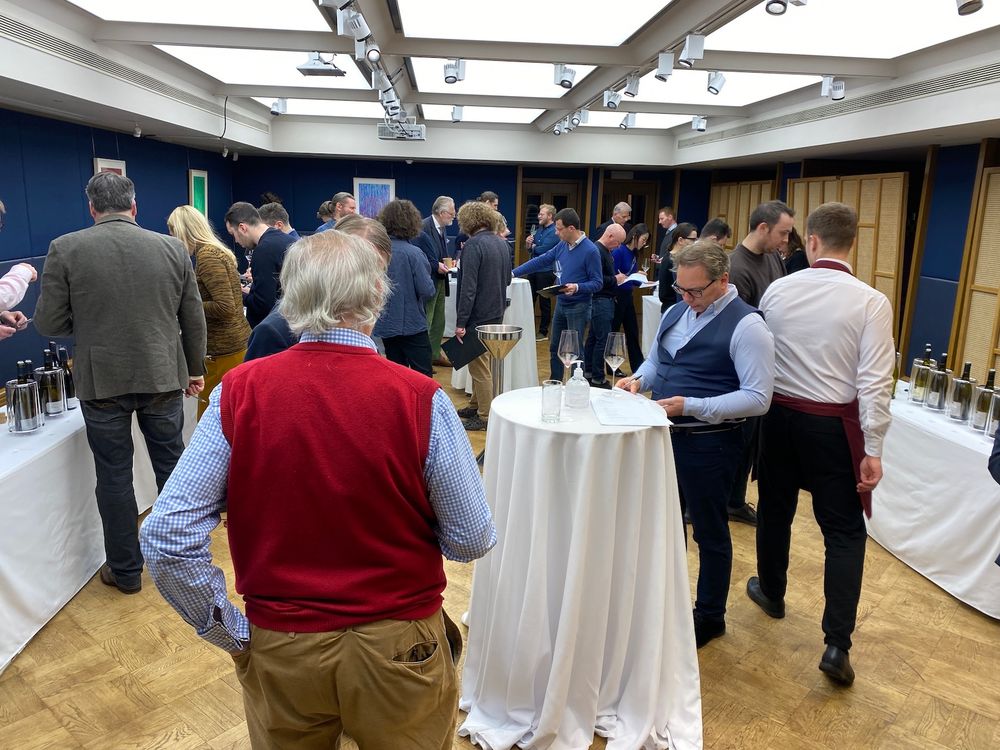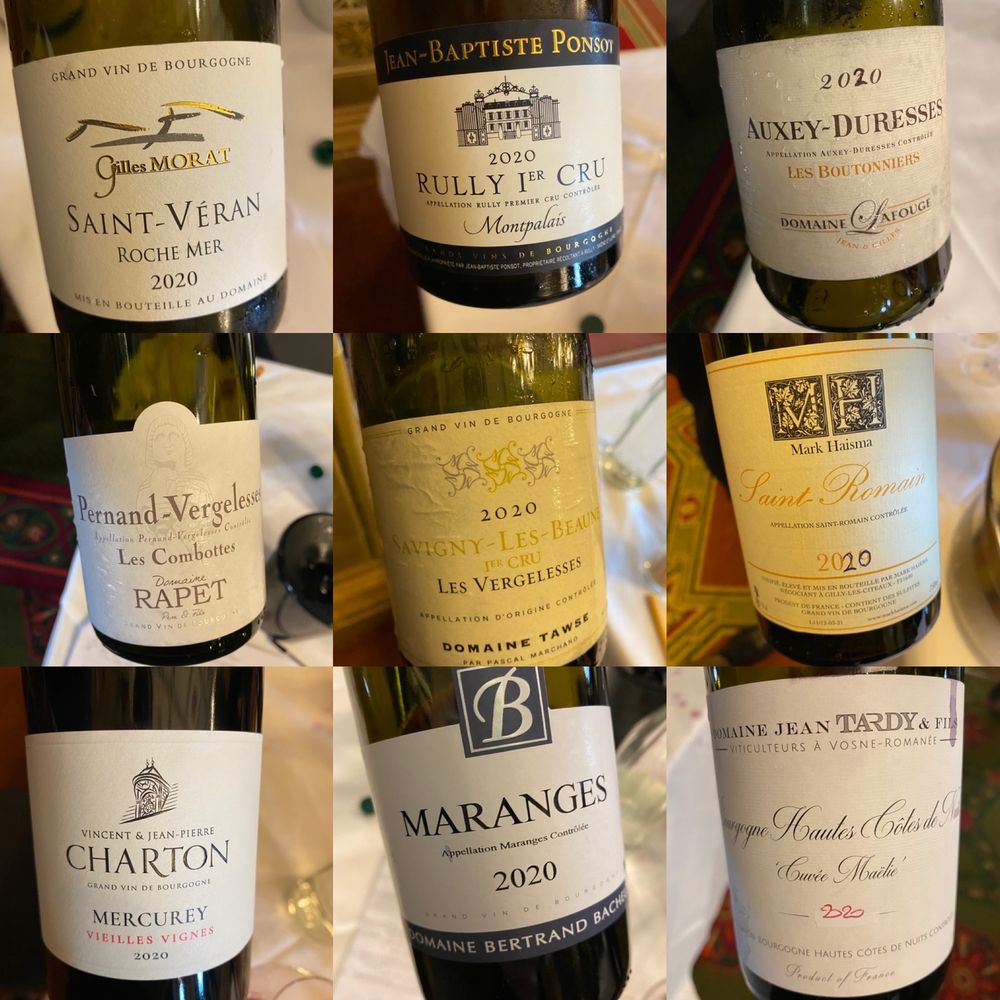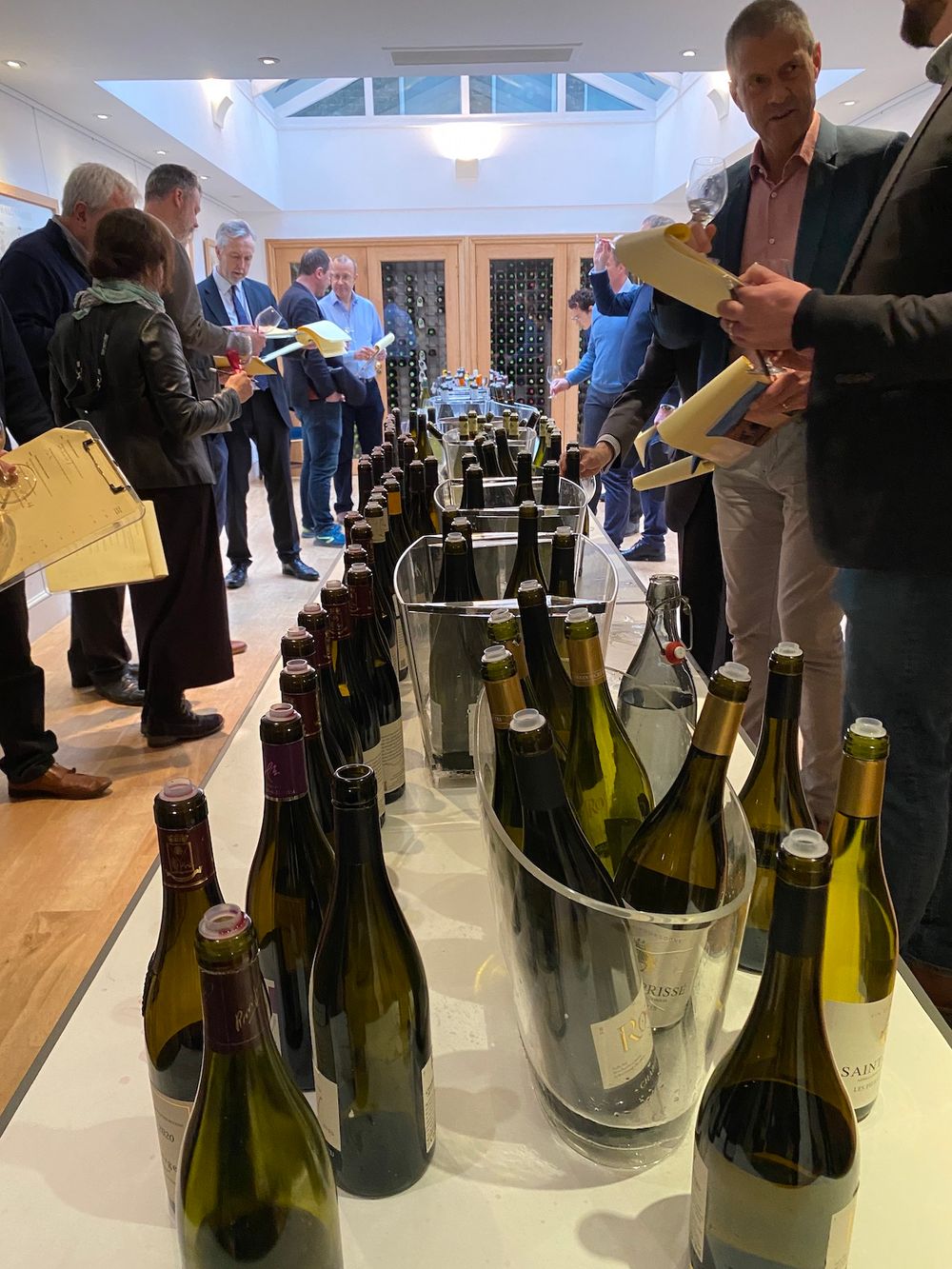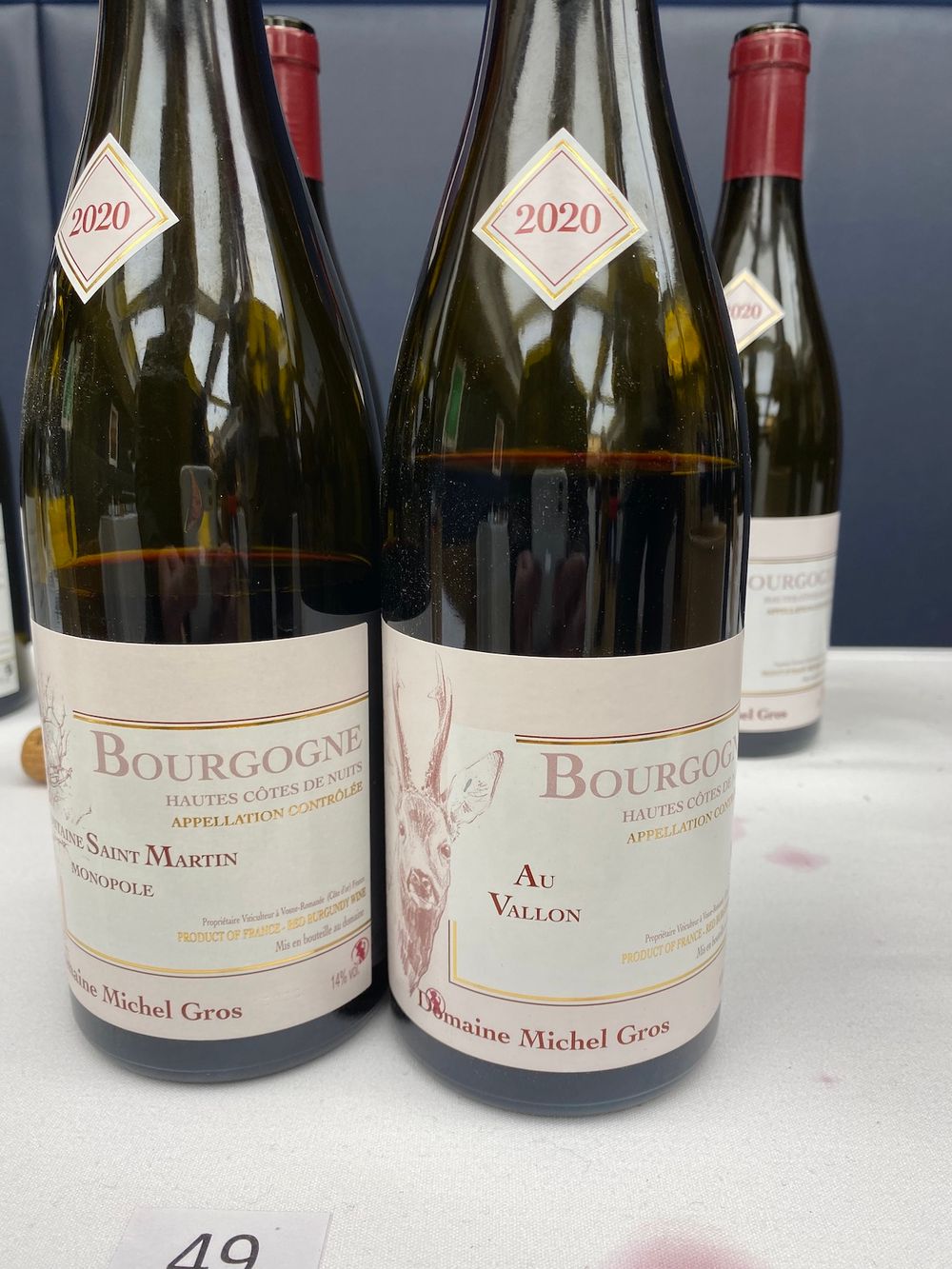“2020 has something of everything and it is going to be a question of reading the notes quite carefully in 2020 and checking to see if it’s your style of wine,” says Jasper Morris about Burgundy 2020.
Bourgogne Week, which presented us with the Burgundy 2020 vintage, concluded last Friday not quite with a bang but certainly not the whimper that many had feared at the start of the year when events were being cancelled with Omicron-like rapidity.
Lea & Sandeman, Howard Ripley and Armit all cancelled their tastings late in the day joining many more who had never scheduled any in the first place but, with Charles Taylor, Flint, Liberty and Thorman Hunt all taking place and Jadot, Bichot and Chanson having delivered comprehensive tastings before Christmas, buyers could achieve a decent impression of 2020 – a noteworthy, fascinating and record-breaking vintage.

Thorman Hunt employed staggered time slots at 67 Pall Mall to reduce the risk of over-crowding
Exactly when the annual event returns to its full glory remains to be seen, however. One suspects that 2021’s disastrously small vintage will witness a scaled-back campaign this time next year, especially given that some producers were even reluctant to send samples this year. One importer I talked to last week reported difficulty in obtaining 2020 samples, the reason given that ‘if you sold out last year without a physical tasting why should I bother sending samples this year?’ Hopefully such short-term thinking will not prevail.
Of the 167 wines that Liberty Wines showed at its tasting over 100 were from previous vintages, one reason the tasting wasn’t labelled as a 2020 en primeur, and a reflection of its healthy stocks of 2019 wines. The benefit here is that, given the variability of the style of red 2020s, wine buyers can buy 2020 whites with the utmost confidence and cherry-pick the 2020 reds, filling gaps with earlier vintages.

Some of the best tasted: Two years ago Flint showed very few wines from lesser-known appellations, for the 2020 vintage there was a much larger selection along with many excellent Bourgogne red and white.
Some key characteristics of the vintage
Much has already been made of 2020’s price increases which have made prices for an entry level Bourgogne rouge or blanc from a decent house look decidedly ‘toppy’. That, coupled with climate change, means that the lesser-known appellations are becoming increasingly attractive to buyers in a vintage when being on a warmer slope may not actually have been an advantage.
Every year the Bourgogne wine board, the BIVB, tasks me with rooting out the best wines from these appellations which are becoming more and more suited to the UK market. In 2020 wines from Maranges, Marsannay, Montagny, Monthélie, Givry, Rully, Santenay, Saint-Véran and Saint Romain, just to name a small selection, have produced some classic wines.
Much has also been made about the weather, although I haven’t heard many importers labelling 2020 as ‘the hottest vintage ever’ for obvious reasons. But it was the hottest vintage on record in Burgundy based on average temperatures – the vintage didn’t have the heat spikes of 2003, 2018 and 2019, but the weather was consistently hot. And 2020 was also the driest year since 1945, with the addition of having the earliest flowering winemakers have ever seen here. The grapes did, by and large, get their ‘obligatory’ 100 days ripening but again, weirdly, the Pinot Noir was ripe before the Chardonnay.
Now all this could have spelt a disaster but what is crucial, though, is how the fruit responded. In a nutshell, the low pH levels and relatively high levels of tartaric acid means that the wines have a thrilling freshness to them, despite what nature threw at them. One interesting facet of 2020 is that biodynamic farmers achieved higher yields than non-biodynamic.
So the white wines have this superb balance between concentrated flavour and vibrancy which, if you wanted to make a vintage comparison, puts them somewhere between the raciness of 2014 and the more fulsome (but structured) 2017.
Right across the board the whites are outstanding and can be bought in complete confidence whether to drink now, lay down or to invest in (despite the prices). And with 2021 not so far away my advice would be to buy now – Grand Crus if you can get them for investment and ‘lesser-known’ appellations and entry level wines for immediate and wonderful drinking.

Tasting at Charles Taylor
So how were the reds?
Unlike the white wines, the reds are variable and very different to previous vintages – the Pinot berries were more affected by the drought and were smaller with much higher levels of colour and concentration. Bichot described the colour as “freakish” and, certainly, I have never seen so many new Burgundy reds have such opacity and depth of colour.
There were two trains of thought amongst the winemakers – those who picked early and compromised with under-ripe skins, pulling back on extraction and banking on the wines sorting themselves out in bottle, and those producers who waited until the skins were fully ripe but then had to contend with higher levels of alcohol (14.5%+) and wines that risked not having a Pinot fruit profile. One prominent British sommelier voiced concern on social media that if Burgundy’s winemakers don’t soon address ripeness from a viticultural view, “many of the wines could become unrecognisable”.
As a whole with the reds, winemakers in 2020 have used much less new wood, backed off on the extraction and ‘infused’ rather than punched down, and used more whole bunch which, although this actually decreases acidity, brings a sense of freshness to the wine. Those who were not attentive can have suffered stuck fermentations as the alcohol increased which leads to elevated levels of volatile acidity.
But that said, and it is a really big ‘but’, many of the reds have an unexpected freshness and a joyous balance – of the 5/600 wines I tasted there were very few examples of ‘cooked’ fruit in the flavour profile and many wines which, with structure and ‘meat on the bones’, will be great for laying down. Burgundy expert, Jasper Morris, has said of the best reds in 2020: “Where the wines have been got exactly right then it’s as great (a vintage) as anything I know… really really fabulous.”
As to red wines in general right across the spectrum Morris said: “2020 has something of everything and it is going to be a question of reading the notes quite carefully in 2020 and checking to see if it’s your style of wine.”
“There are some people who’ve actually made some wines that are quite elegant, plenty of red fruit not too dark in colour and are classical wines, others have made some brilliant wines in a deeper, richer more powerful style but still balanced and a third group who have also made very good wine but for me they’re a little too rich and the fruit is a little bit too ‘showing the sunshine’. And others again where the wines are clearly unbalanced and not good news.”

A good example of two different lieu-dits within a lesser-known appellation producing first rate and very different cuvées
My personal experience of tasting the 2020 reds was that in the Côtes des Nuits in particular many of the reds, including many of the top sites had a small, black cherry profile. Red fruit was much harder to find generally and around Beaune, where reds are characterised by that ‘blue fruit crunch’, this was more of a red fruit profile in 2020 with even blackberry and blackcurrant flavours creeping in. There were some wines that tasted like a blend, some which had New World ripeness and almost all had an incredible depth of colour that will be catching out many people blind-tasting the vintage in the future. But there are also some excellent red wines to be found and many with a surprising amount of acidity – especially so given the intensity and concentration of the fruit.
As Jasper Morris says of the 2020 reds, it is not a vintage to pile in and buy everything. I would add to that, that I do not think 2020 is a vintage to be paying the big bucks for the Grand Cru reds, except in exceptional cases. However, as I have mentioned many of the lesser-known appellations and village wines were of sublime quality, where ‘lesser’ sites (with altitudes and aspects that have not been historically significant) are beginning to come into their own during climate change. And, as they have not been on the map, as it were, these are the places where some of the best value-for-money can be found.
Footnote…
In conclusion, the en primeur tastings were outstanding as events and extremely well marshalled. With all of the events attendees were asked to have a lateral flow test on the day and/ or to provide proof of vaccination. Personal spittoons were de rigeur and in most cases people kept a respectful distance from one another. No producers were present, quel domage, but look out for the BIVB’s large-scale trade and press event on June 7 when Burgundy will be coming to town – in force.
































